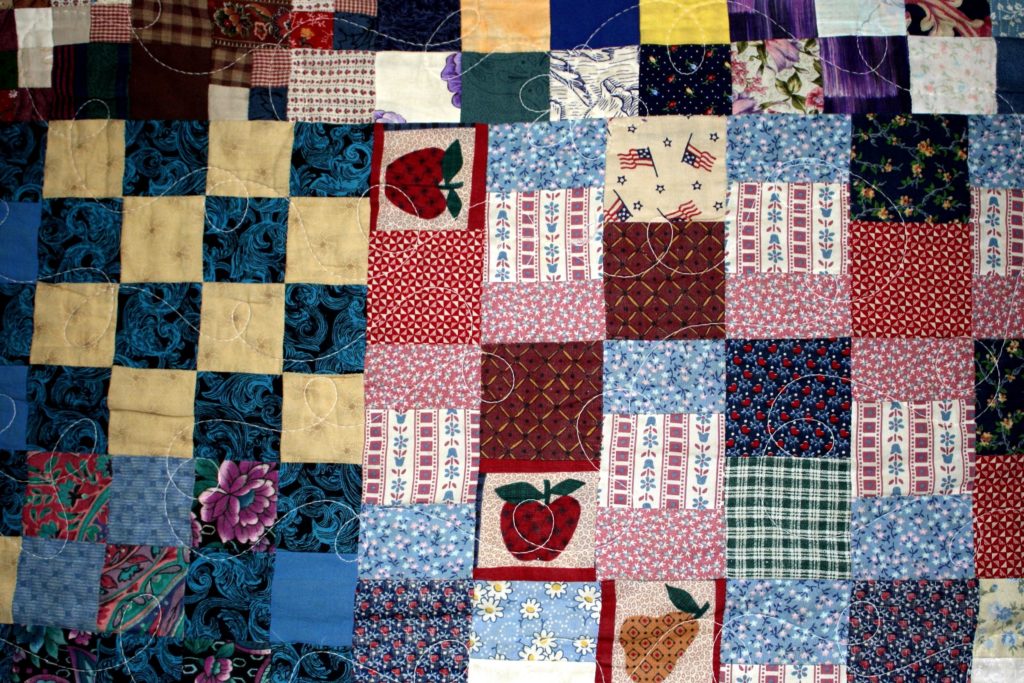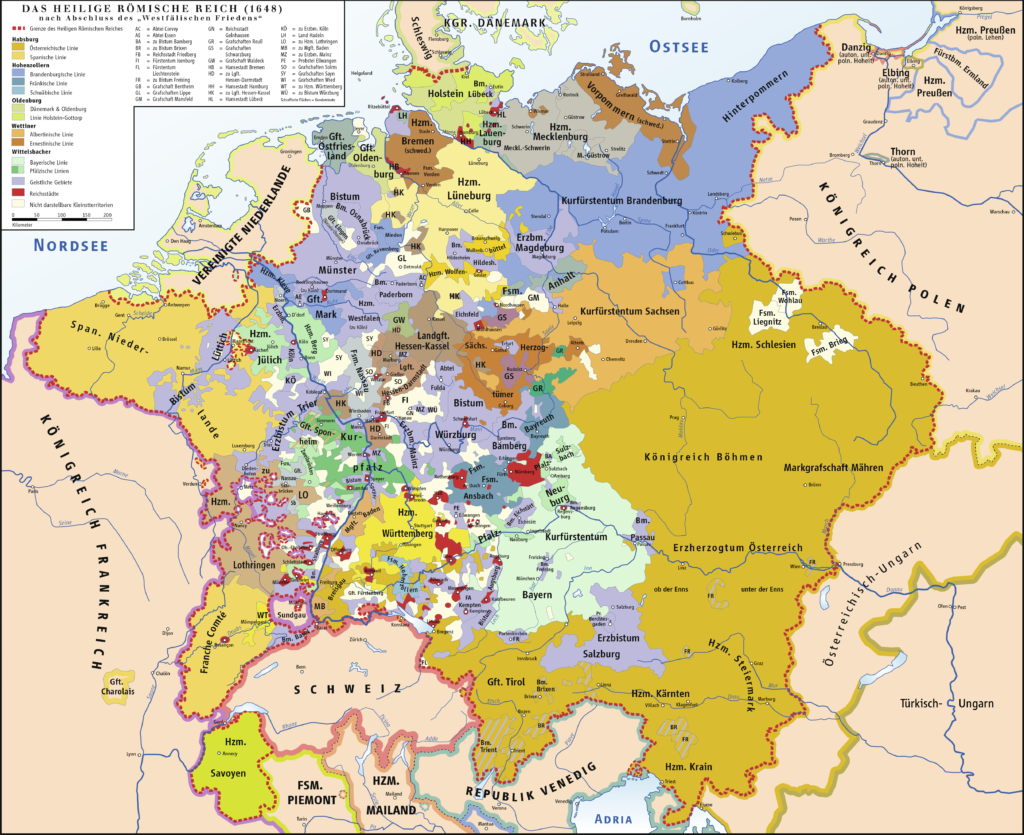Untranslatable German: der Flickenteppich! Posted by Sten on Oct 8, 2020 in Language
Just like many other countries in recent weeks, Germany has experienced a rise in Neuinfektionen (new infections) of das Coronavirus. And because of these Neuinfektionen, countries have once again issued Reisewarnungen (travel warnings) and imposed mandatory Quarantäne (quarantine) of 14 days upon return from a Risikogebiet (high-risk area). But if you think that these measures stop at country borders, you would be wrong – at least in Germany. What’s going on? And how is it such a Flickenteppich?
Different rules in each Land
Germany has 16 Bundesländer (Federal States, or Länder). Like the States in the United States, these Länder have a lot of autonomy in certain policy areas. With regards to the Coronavirus, they can issue their own guidelines and restrictions.
The current definition in Germany for a Risikogebiet is if a Land or a region has more than 50 Neuinfektionen per 100.000 Einwohner (inhabitants) in the 7 days prior, the so-called Sieben-Tage-Inzidenz (seven-day incidence). And there is a neat list of these Risikogebiete outside of Germany as a whole. But such a list is missing for the regions within Germany! Each Bundesland decides for itself which region, city or district counts as Risikogebiet, and what to do with that Regeln (rules) are imposed with that information. And they don’t shy away from marking areas within Germany as Risikogebiete, either.
Currently (as of October 6), the Bundesland Schleswig-Holstein sees the cities Hamm and Remscheid, as well as four Berlin districts (Mitte, Neukölln, Friedrichshain-Kreuzberg and Tempelhof-Schöneberg) as Risikogebiete. Quarantäne of 14 days is mandatory if entering the Bundesland from these Risikogebiete. Berlin, its own Stadtstaat (city state), does not have this classification for its own districts. So travel within Berlin is unrestricted.
Most of the other Bundesländer have a Beherbergungsverbot (accommodation ban) for travelers from the Risikogebiete within Germany. What this means is that Beherbergungsbetriebe (accommodation establishments), such as hotels, are not allowed to accommodate people from those areas, unless they can show that they fall under one of the exemptions.
If you want to know the details for a specific Bundesland, the Gesundheitsbehörde (health agency) of the respective Bundesland will have the information on their website. Otherwise, the Tagesschau made an overview, too.
So confusing!
Pretty confusing, isn’t it? Ministerpräsident of Thüringen (Thuringa) Bodo Ramelow said “Reisebeschränkungen im Inland sind das falsche Signal und nicht hilfreich” (“Domestic travel restrictions are the wrong signal and not helpful”). Others fear that these simultaneous rule differences lead to Verwirrung (confusion) and misunderstanding of the Regeln, which could lead to people ignoring them altogether. It creates a verwirrender Flickenteppich. A Flicken… what?
Der Flickenteppich
Due to its many different patterns and colors, the word Flickenteppich is not only used for a rag rug (the real translation for Flickenteppich), but also as a metaphor to describe Fragmentierung (fragmentation). In this case, the rules on Coronavirus measures are a Flickenteppich within Germany. Each place has their own rules different from the other.
The closest English equivalent may be “hotchpotch”. Though our awesome readers have come up with the equivalent: “patchwork quilt”! Just like in German, it refers to a rug, but can also be used as a metaphor in the same way. Thank you for letting me know about this word.
Another Flickenteppich, which might be related to this one, is the Flickenteppich that existed centuries ago in the land that is now Germany: the territories of the Heilige Römische Reich (Holy Roman Empire). The picture above even looks like a Flickenteppich with all the little kingdoms and duchies all over the map!
With a history like that, it is perhaps not surprising that even more than 350 years later, German Bundesländer cannot unite around the same Regeln!
Are you traveling within Germany these days? Did you know about the word Flickenteppich? Do you have a good English equivalent for it? Please let me know in the comments below!

Build vocabulary, practice pronunciation, and more with Transparent Language Online. Available anytime, anywhere, on any device.







Comments:
Brian O’Sullivan:
“Hotch-potch” – or “hodge-podge” in American English – is a good translation. Maybe “crazy quilt” is even closer to “Flickenteppich”, but it’s probably less well-known unless one is into crafting/sewing (or is married to such a crafter!).
Anna Perlini:
the correct translation would be “patchwork quilt”, especially since you added a picture of one. They are very famous in the States.
Sten:
@Anna Perlini Ah, hearing that for the first time. Thanks! I’ll add that in the post 🙂
stephen barden:
Try patchwork quilt for flickenteppich. It means much the same thing: a mishmash, a motley
Sybille Schellack:
Very interesting article. I thought the flickenteppich only was in the US. As to the translation, it is spelled hodgepodge. But other words would be mishmash or crazy quilt.
Sten:
@Sybille Schellack Thanks for the other words!
I’ve seen hodgepodge spelled both ways, and I just went with hotchpotch. But fair enough!
Tim Mercer:
In a hurry, I would opt for patchwork without the word quilt, maybe even a jigsaw puzzle.
Michael Dear:
At least for US readers, “crazy quilt” would be quite an appropriate, and understandable, translation.
Example:
“For a sport that seems so simple — hit the ball, find the ball, hit the ball again — the crazy quilt of rules that govern it can be a turnoff to would-be players or beginners.” Karen Crouse, “The Simple Game of Golf Tries to Simplify Its Rules”, New York Times, March 1, 2017.
Sten:
@Michael Dear Nice, thanks for the example!
Ann Pattison:
A quilt is mor of a bed covering than a floor covering so I would use patchwork on its own or hotchpotch.
Sten:
@Ann Pattison That’s true. The picture is more representative of a quilt than a Flickenteppich. But a quilt shows the meaning better than a Flickenteppich, which simply has different strands of color, which is why I used this.